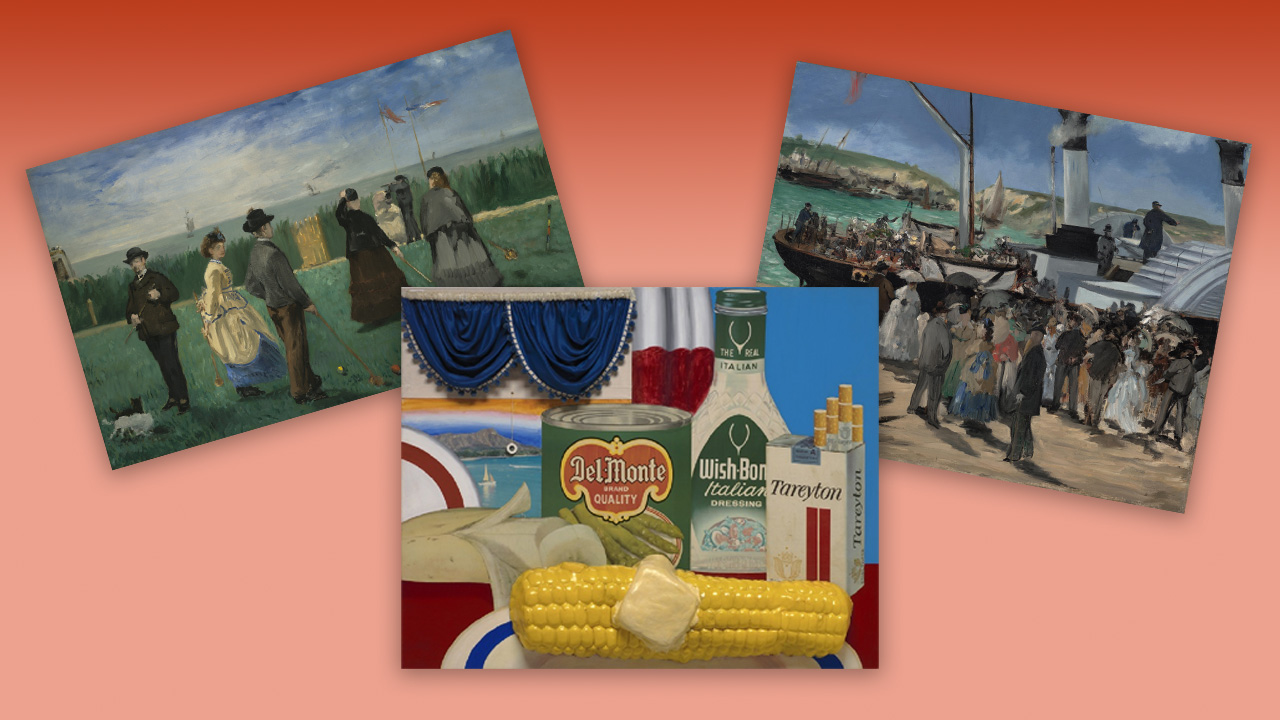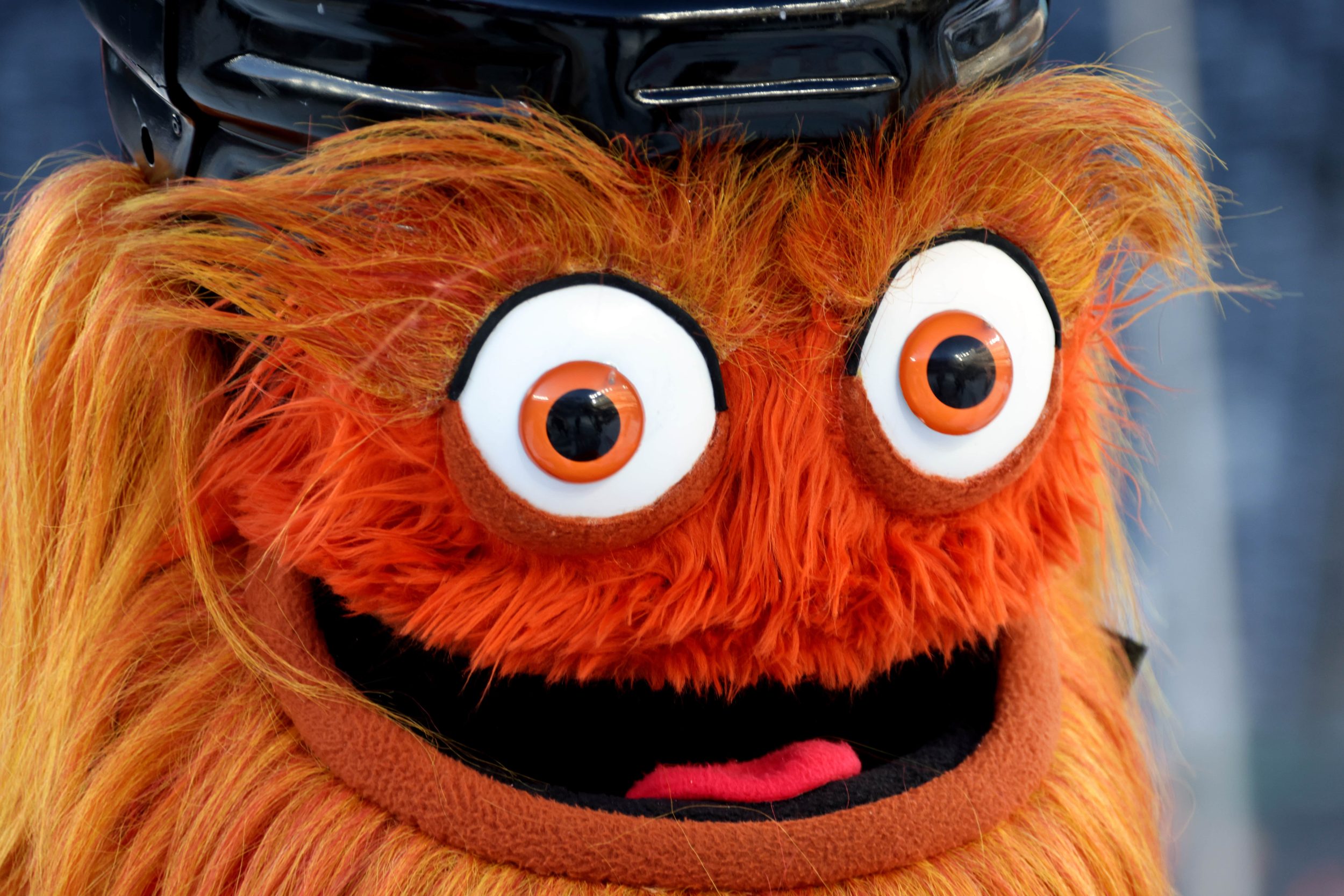The Philadelphia Eagles’ Super Bowl parade ends at the steps of the Philadelphia Museum of Art. In a few months, that museum will receive its own prize from the Eagles’ win—an Édouard Manet painting, won on loan from Kansas City’s Nelson-Atkins Museum in a Super Bowl bet.
This is the second time the museums have wagered on the Super Bowl; two years ago, KC’s museum got Thomas Eakins’s 1875 oil painting Sailing from the Philadelphia Museum of Art. It was on display for about two months. While it would be Very Philadelphian to have settled this bet using a Philadelphia artist, the Nelson-Atkins curators were the ones to pick that painting from the PMA’s collection.
The museums chose the paintings ahead of time this year, and the result was a Manet-on-Manet challenge. Philly put up The Folkestone Boat, Boulogne against Kansas City’s The Croquet Party. Both paintings are classic maritime scenes done by Manet in Boulogne-sur-Mer, France, where he summered—though a number of sketches survive, so they were both likely done in studio. “Unlike the Eagles’ offensive line,” the PMA press officer Josie Hall says, “both canvases are small and can be regarded as modern scenes undertaken by an artist on holiday.” Manet is basically painting his vacation the same way you would send a selfie today or a postcard 25 years ago. I like when a friend asks if I want a postcard from their trip. This is the year I’m going to do it, too. Manet has inspired me. Some lucky people will be getting a postcard from Wildwood Crest, New Jersey.

The Croquet Party is one of Manet’s paintings of upper-class social gatherings. I think I cannot give a more comprehensive analysis of this work than: Rain is going to ruin this croquet party, and soon.
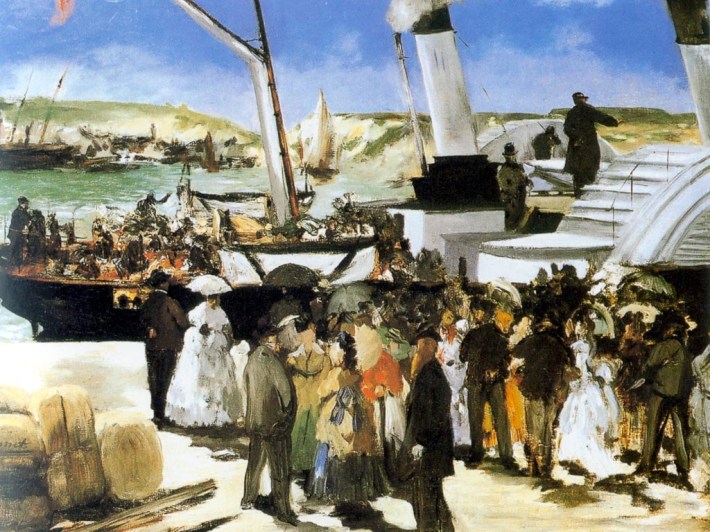
The PMA’s offering presents a different scenario: Upper-class passengers on a steamer; the artist's wife Suzanne and son Léon are in the painting as well. Steamer and Croquet illustrate the same interests in terms of his subjects: fashion, society, seaside resorts. This one presents a notably more upbeat take on the situation. The idea of summering is always better than the actual croquet game you play once you’re there. Actually, maybe this is the more downbeat one.
It’s nice that mayors bet each other with their city’s finest examples of sandwich-shop slop; there's something appropriately messy, stupid, and generally mayoral about it. What I like about the museum bet is that it actually can be enjoyed by the public of the winning city a few months after the Super Bowl. The losing art museum even gets some recognition. “We love sharing our paintings with museums around the world,” Nelson-Atkins Deputy Director of Curatorial Affairs William Keyse Rudolph told Defector. “Our works of art are ambassadors that alert people to the great treasures of the Nelson-Atkins to encourage them to come for a visit. Despite the rivalry between our teams, we are great friends with the Philadelphia Museum of Art. They were happy to share their Eakins with us two years ago and we are happy to share our Manet this time. We are peers, not rivals.”
If the Eagles had won Super Bowl 57, they would’ve received Venus Rising from the Sea – A Deception by Raphaelle Peale. The Peales were a family of renowned early American painters in Philadelphia—I am now firmly convinced the Philadelphia Museum of Art bullied the Nelson-Atkins into picking just Philly artists—and Raphaelle is best known for his still-life work. This trompe-l'œil (a three-dimensional effect, but fancy-sounding) is the inverse of his regular work.
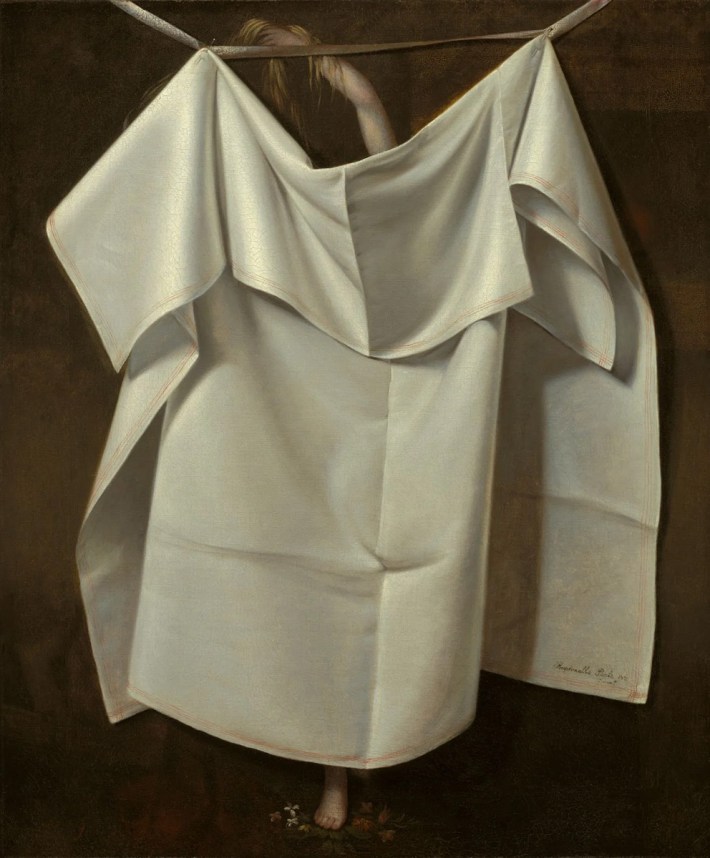
That’s the stuff! There has been scholarly debate over the interpretation of this painting since before I was born, so I think I will stay out of this one besides reiterating that, in my opinion, “that’s the stuff!”
Both of the paintings from Nelson-Atkins are rather dark. Coincidentally, that museum has a colorful painting I am quite into. It’s a pop-art piece by Tom Wesselmann, who didn’t like being called a pop artist but counts as one because he did paintings that include a can of Del Monte peas, a bottle of Wish-Bone Italian Dressing, and a pack of Tareyton cigarettes.

I first encountered Still Life #24 in an article titled “The Troubling Puzzles of Karly,” which mocked the horrifying jigsaw puzzles made by Springbok. There are puzzles of plush bears posed on a nude beach complete with a binocular-equipped pervert bear, puzzles of a row of celebrity wax heads that also includes a wax model of Elizabeth Taylor’s feet, puzzles of… you know what, I don’t need to go on. But there is also a puzzle of Still Life #24, which as I mentioned includes a can of Del Monte peas, a bottle of Wish-Bone Italian Dressing, and a pack of Tareyton cigarettes.
Wesselmann used acrylic paint for this collage, though the curtains in the upper left corner are fabric. It has not been a particularly well-received painting. As 1-900-HOTDOG’s Seanbaby notes in the puzzles article, “I think jigsaw puzzles might be a fallback career when you can’t paint for shit. Still Life #24 is clumsy ass garbage. It looks like the production background for an unreleased Christian cartoon about food cops. If you put this trash image on a birthday cake, rats wouldn’t eat it.” (I realize his name is Seanbaby and he writes for a site called 1-900-HOTDOG, but the man has an art degree.) Kansas City Star art critic Donald Hoffmann, in a 1987 review of the pop art exhibition “Made in U.S.A.,” managed to avoid using the words "shit" and "ass" but was generally not much kinder. “Seen all over again, most of the art in ‘Made in U.S.A.’ looks even more cheap and uncaring. It holds too many hints of shallow talents cynically spent on the trivial. The exhibition is dispiriting, and that’s the last thing art should be.”
Nelson-Atkins acquired Wesselmann's 1962 painting in 1966 and has put it on display six times, the most recently in 1999. That “Made in U.S.A.” exhibit was the most recent before that. The museum says the piece is in need of conservation due to the paint and fabric. “Our team is working to develop a thoughtful conservation plan,” the museum’s Kathleen Leighton says. In an email, she says it’s a “great piece!”
I agree. I love this painting. I go back and forth on whether it’s brilliant or stupid, and I don't know that I could explain either answer. I think my wife likes it, too? At the very least, we did the puzzle together. Detective helped, too.
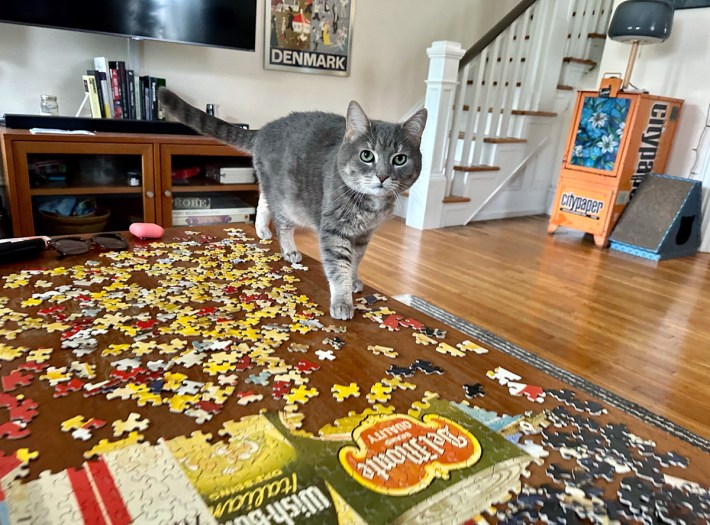
I may have run off the rails somewhat in this story about a bet between two art museums, but I will allow myself some license there. Think about how much art I consumed, and considered, as result of a silly bet between museums. The merits of the paintings aside, this bet seems like a good way to sneak some artistic consideration into the world.
What I’m saying is: Museums should bet each other all the time. Museums could hold an arm wrestling contest between curators, see which security guards would win in a tug-of-war, or compete for fastest coat check. Then you swap paintings and suddenly someone’s trying to figure out whether they love or hate Still Life #24. No Super Bowl needed.
